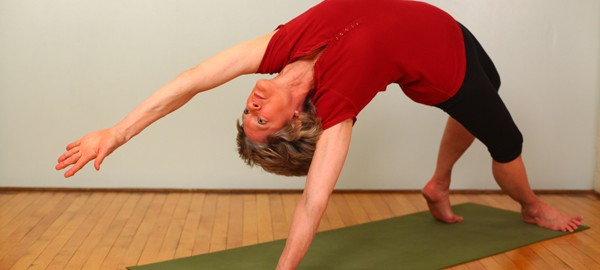Is Yoga Safe?
Attention: Media scare: Yoga is dangerous for stiff men and flexible women. Generalizations like this amaze and disturb me, because people read this and are scared to try yoga, or scared to continue if they already do it.
Big message here: Not all yoga is the same. People need to use discrimination in choosing an appropriate style of yoga and a good teacher. A well-educated, well-intentioned teacher can give instructions that will protect students from the errors that are easy for anyone to make: poor alignment, over-efforting or under-efforting. As one teacher taught me years ago, there are two mistakes in yoga: doing too much and doing too little. Beginners might tend to do too little, and experienced people might tend to do too much, although that’s another generalization, so feel free to disregard it.
Yoga is not about imitating a shape, it’s about inner transformation. It’s not meant to be competitive, but it is meant to challenge us. What makes this difference? Attitude and intention. The student who comes to yoga for the sake of achievement, competition, or self-promotion may leave their common sense behind, or maybe they never had it. The competition might be with the teacher, with other students, or with some mental image or internal standard that the student made consciously or unconsciously.
You can get injured doing anything – running, dancing, driving, crossing the street, cooking dinner, you name it. It’s our human responsibility to do anything with discrimination, with common sense. In yoga, common sense includes knowing your own body. Are you generally stiff, generally flexible, or a mixture of stiff in some areas of your body and looser in others? When you feel pain in a pose, is it the pain of unused muscles and joints starting to move, or is it strain? What kind of strain is it? Is something getting compressed, or is something stretching too much, or moving in ways that are not suitable to your particular physical structure? Have you prepared for the particular demands of the pose? These are all questions we can learn how to answer for ourselves.
Alignment and support also matter. How we arrange ourselves in a pose (every part counts) and the muscular supportive actions we do (while not appearing to move at all) are crucial to the safety (or lack of it) in the practice. I believe that we need enough time in each pose to feel, to activate the right support, and to prevent strain. A fast-moving practice doesn’t allow for that, and is particularly dangerous for beginners. And often the fast moving classes are large ones, in which the teacher can’t possibly monitor each student.
Most of us have the same set of bones and muscles, but within that, there’s a lot of individual variation. The shape of your joints and the qualities of your soft tissue are genetic traits. You may not know about a biomechanical variation you have until you start to feel pain during or after the practice. If you force yourself into a pose, you are asking for trouble, and the problem is not the yoga. We do get warning signs, and that’s the time to apply common sense: find out what’s going on and allow that information to inform the way you practice. Yoga asana practice includes a vast array of poses: if you can’t or shouldn’t do headstand or lotus, for example, there are many other wonderful poses you can do.
So: take a breath to refine your goals, find a good teacher, and use your common sense.
Ellen Saltonstall




Thanks Ellen for articulating this. Love the article and new website! Looking forward to taking more training with you in the future.
Loved this !
All blog posts very informative and easy to absorb. Look forward to more.
Hope you’re well
J